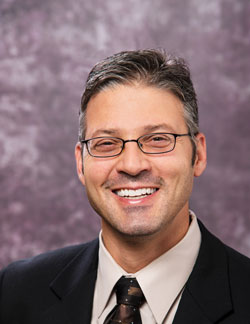Can we use patient to clinician videos to improve quality as well as patient safety at end of life? As medicine has evolved, care has become more expensive. An area of focus that many seem to believe is low-hanging fruit to control the cost of health care is end-of-life care spending, which is predicted to soon be $350 billion annually (1). There have been numerous recommendations and efforts to have patients complete living wills (LWs) and now there is a transition to have patients complete a POLST (Physician Orders for Life-Sustaining Therapy).
LWs and POLST are extremely powerful documents and medical orders that can help control cost and preserve a patient’s wish to decline treatment (2, 3). In the case of POLST, it can even predict the location of death and possibly even the timing of death from form completion (3, 4). However, they can also result in medical errors such as inappropriate DNR order creation (5) and under treatment or over treatment. In the case of under treatment, a patient is harmed or dies (6,7). In the case of over treatment, a patient can be harmed and live against their pre-determined wish to die naturally (8). Today there are now malpractice cases developing because the patient lived or because the patient died (9,10).
Because risk managers are responsible for overseeing or being intricately involved with quality and patient safety, they have an opportunity to act as the advocate to ensure patients’ wishes are safely and accurately followed.
Today, institutions are determining if they are to use POLST or a Living Will. Many hospitals and post-acute facilities have changed their code status documentation to mirror what is documented on the POLST form. Thus, the voluntary nature of the POLST is no longer voluntary and becomes an everyday operational task by medical providers.
So, we have now opened a Pandora’s Box in the world of risk management and it requires aggressive action to both ensure the safety of patients and mitigate institutional and provider risk. Recently, to support this patient safety concern, the American College of Emergency Physicians released guidelines for the interpretation of POLST (11). These ACEP-approved guidelines are not meant to stop medical errors from occurring but rather are to guide a best practice.
Preventing medical errors with respect to Living Wills and POLST is not an easy task. TRIAD research has shown that the documents are often misinterpreted (12, 13). Furthermore, there is national debate regarding the appropriateness of POLST nationalization without safety and quality research (14,15,16). Recently released in the Journal of Patient Safety is the TRIAD VIII – a nationwide multicenter evaluation to determine whether patient video testimonials could safely help to ensure appropriate critical vs. end-of-life care (17). The study revealed that when paper documents are combined with patient-to-clinician videos, we can achieve significantly greater consensus in achieving the appropriate treatment goal. Further, the data reveals that we can clarify to minimize provider misunderstandings regarding code status as well as the decision to treat and save a life or withhold life support and allow the natural dying process. Patient-to-clinician video can even tackle difficult conversations such as preoperative DNR concerns as well as answer questions as to when to deactivate AICDs and pacemakers. A piece that is often missing in the confusion surrounding end-of-life care is the voice of the patient. TRIAD VIII allows us to reengage the patient in a way to guide care and treatment in a safer more effective manner than paper alone.
The field of medicine continues to evolve with technologies to treat conditions and expand the age of life. However, medicine has also changed drastically the typical model of the physician-patient relationship with outpatient and inpatient practices being disconnected. Today patients are not cared for by their PCPs and specialist as they once were in the past. This evolution has created a form of “medical stranger danger.” Patients are treated by many physicians (emergency, hospitalist and specialty surgeons) with whom they have no pre-established relationship. These medical strangers often must make life or death decisions based upon a paper or electronic form of living will or POLST. We often call this an interpretation but it often is an uneducated guess as we were not involved in the conversations that went into the Living Will or POLST creation. From the TRIAD research, we know that living wills get misinterpreted as DNR orders. From other quality research, we know that POLST forms have been created for patients outside of their specified indications, discordant from the patient’s understanding and incompletely created (18, 19). We also know that both Living Wills and POLST can have medical errors associated with them. So how are we to know what a patient or their health care agent consented to?
To help address these complexities, Medicare is now reimbursing for advance care planning conversations (ACP). This represents an opportunity to redefine ACP and involve the actual patient’s wishes in the care plan. Physicians can now be reimbursed to get involved in these discussions to take an active role to advocate for their patients.
With patient-video clarification, we can now hear from patients, in their voice and expressions, when they are critically ill and receive their guidance rather than providers guessing after reviewing a form that may or may not have been completed correctly. Every resuscitation is unique and complex. Written documents are subjected to degrees of interpretation with respect to current patient medical status and their desire for treatment. In a short time, dependent and stressful environment, physicians need to know what to do initially in the first seconds to 15 minutes of an event. Furthermore, the physicians’ comfort in the process to trust and act on what is documented is of paramount importance. Paper forms at present do not do this well or provide the necessary level of assurance (17). Therefore, the question becomes, can a video testimonial help foster understanding of written patient prerogatives? TRIAD VIII represents the initial research that it can and does.
Living Wills and POLST, like them or not, are here to stay and are very effective to control costs and are still very much needed. But, we have a patient safety problem and now have increased risk of litigation that requires aggressive action. TRIAD VIII presents an opportunity to do better. The traditional “treat first and ask questions later approach” is already being challenged by malpractice litigation. To do what is right for patients, we need to embrace both Living Wills and POLST and be certain we set quality standards for their completion and understanding. We must also investigate patient-to-clinician video and technologies to allow the clinicians to hear from patients to accurately guide their care.
References:
- Institute of Medicine. Dying in America: Improving Quality and Honoring Individual Preferences Near the End of Life. National Academies of Sciences, Engineering, Medicine. (2014, September 17). Available at www.nationalacademies.org/hmd/Reports/2014/Dying-In-America-Improving-Quality-and- Honoring-Individual-Preferences-Near-the-End-of-Life.aspx. Accessed January 3, 2016.
- Nicholas LH, Langa KM, Iwashyna TJ, et al. (2011). Regional variation in the association between advance directives and end-of-life Medicare expenditures. JAMA. 306:1447-53.
- Fromme EK, Zive D, Schmidt TA, et al. Association between Physician Orders for Life- Sustaining Treatment for Scope of Treatment and in-hospital death in Oregon.(2014) J Am Geriatr Soc. 62:1246-51.
- Zive DM, Fromme EK, Schmidt TA, Cook JN, Tolle SW. (2015) Timing of POLST form completion by cause of death. J Pain SymptomManage. 50(5):650-658.
- wsoctv.com/news/9-investigates/whistleblower-9/whistleblower-9-do-not-resuscitate-bracelet-mistakenly-put-on-hospitalized-mans-wrist/446014450
- com/news/local_coverage/2016/01/grieving_daughters_do_not_resuscitate_nightmare
- http://wgntv.com/2017/04/04/mother-dies-in-nursing-home-after-nurse-reads-chart-wrong-family-alleges/
- dallasnews.com/news/courts/2017/05/12/doctors-ignored-dying-moms-dnr-order-family-says-suit-methodist-health
- nytimes.com/2017/04/10/health/wrongful-life-lawsuit-dnr.html
- Kaplan AL. A Hospital Gets Sued for Keeping a Patient Alive. medscape.com/viewarticle/881185
- ACEP Policy Statement: Guidelines for Emergency Physicians on the Interpretation of Physicians Orders for Life-Sustaining Therapy (POLST). http://polst.org/wp-content/uploads/2017/04/POLST-Guidelines-for-Emergency-Physicians-Jesus-JEAberger-K-Baker-EF-Limehouse-WF-Moskop-J-Wang-D-Derse-AR.-ACEP-Policy-2017.pdf?utm_source=National+POLST+Paradigm+Newsletter&utm_campaign=fb40bce84f-EMAIL_CAMPAIGN_2017_05_01&utm_medium=email&utm_term=0_6063fa832f-fb40bce84f-106306605
- Mirarchi, F. L., et al. (2012). “TRIAD III: nationwide assessment of living wills and do not resuscitate orders.” J Emerg Med 42(5): 511-520.
- Mirarchi, F. L., et al. (2015). “TRIAD VI: how well do emergency physicians understand Physicians Orders for Life Sustaining Treatment (POLST) forms?” J Patient Saf 11(1): 1-8.
- Moore KA, Rubin EB, Halpern SD. (2016).The Problems With Physician Orders for Life-Sustaining Treatment. JAMA. 315(3):259-260. doi:10.1001/jama.2015.17362.
- Halpern SD. Toward Evidence-Based End-of-Life Care. (2015). N Engl J Med 2015; 373:2001-2003November 19, 2015DOI: 10.1056/NEJMp1509664
- Tolle SW, Moss AH, Hickman SE. Assessing Evidence for Physician Orders for Life-Sustaining Treatment Programs.(2016). 315(22):2471-2472. doi:10.1001/jama.2016.4024.
- Mirarchi FL, Cooney TE, Venkat A, et al. TRIAD VIII: Nationwide Multicenter Evaluation to Determine Whether Patient Video Testimonials Can Safely Help Ensure Appropriate Critical Versus End-of-Life Care. (2017 June). J Patient Saf.13(2):51-61.
- Hickman SE, Hammes BJ, Torke AM, Sudore RL, Sachs GA. The Quality of Physician Orders for Life-Sustaining Treatment Decisions: A Pilot Study. J Palliat Med. (2016, Nov 1) [Epub ahead of print].
- B Clemency et al.(2016, September 28) Decisions by Default: Incomplete and Contradictory MOLST in Emergency Care. J Am Med Dir Assoc 18 (1), 35-39. 201.
Ferdinando L. Mirarchi, DO, FAAEM, FACEP, is the medical director in the Department of Emergency Medicine, UPMC Hamot and chair of the UPMC Hamot Physician Network Governance Council in Erie, Pennsylvania.









